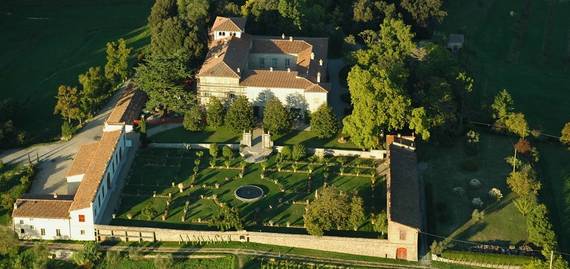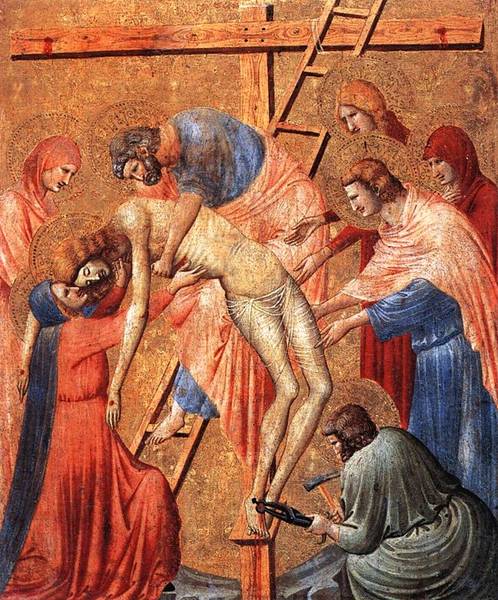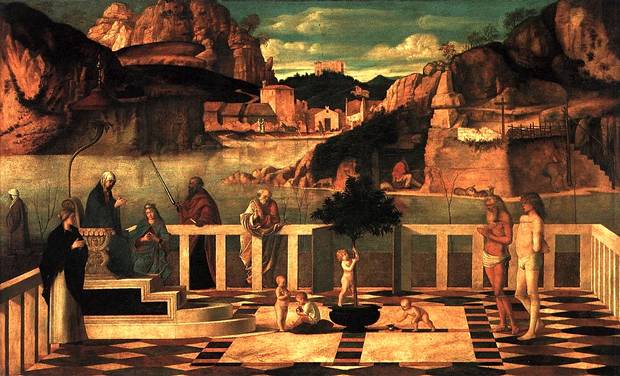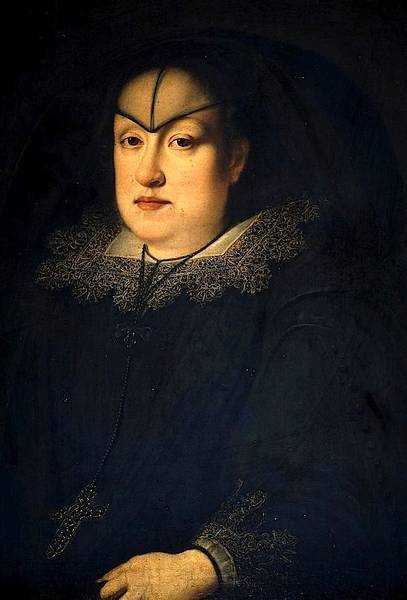by Alta Macadam (author of Blue Guide Florence)
The wide streets around San Lorenzo, the great Medici church close to their family palace, which in effect form a piazza, have recently been cleared of market stalls so that the exterior of the building has regained its dignity. Inside visitors have been provided with a wonderful opportunity to come face to face with one of Donatello’s pulpits in the nave, now restored. An ingenious scaffold and lighting system has been set up so and if you put one euro into a little machine you can then climb up to the level of the pulpit and examine the details of the gilded reliefs. This is an occasion not to be missed, since the pulpits have always been very difficult to see, being raised up on columns. The pulpit in question is the one on the right, from which the Epistle was read, and the three reliefs at the height of the walkway are the Resurrection, the Ascension (or Christ Appearing to the Apostles) and the Descent into Limbo. Although Christ takes on a quite different appearance in each of the scenes, they were all cast together and they have a more or less continuous background. They date from the very end of Donatello’s long life, around 1460.
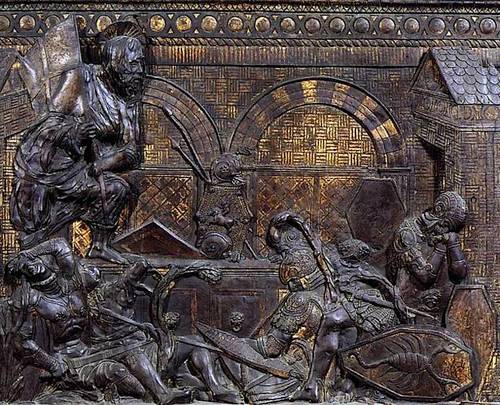
In the Resurrection Donatello famously portrays Christ as an anguished, elderly, infirm figure, hooded and still in his grave cloth, supported by his banner. In contrast (and following the familiar iconography of this scene), the soldiers in the foreground are depicted as genial innocents, most of them fast asleep but all in different attitudes, and with their feet carefully modelled. There is one seen from behind who seems to be hanging onto the edge of the tomb in astonishment, having just awakened; and if one looks even closer, there are two more in the far background on the other side of the sarcophagus: it is difficult to make out whether the scene includes six or seven soldiers. The frieze at the top of the pulpit has little playful putti and centaurs in relief around the central signature ‘Opus Donatelli Flo’ (the great sculptor was always touchingly proud of his birthplace), and at the corners are ‘classical’ horsemen, standing holding their horses’ bridles in a manner reminiscent of the Dioscuri.
In the Descent into Limbo Christ is still an elderly man but a much less dramatic figure: it is the scene itself which is particularly harrowing. On the extreme right stands the emaciated Baptist holding out his hand to Christ. All around, some half hidden, are the Saints who await liberation. But the crowd also includes figures without haloes: the head of Eve appears in the doorway and in front of her is Adam, with his arms stretched towards Christ. Two small grotesque devils, one entwined with a snake, and both with webbed feet, are also present. It has been suggested that the iconography of this panel may have been inspired by a miniature Byzantine mosaic which Donatello would have seen in the Baptistery (and which is today preserved in the Museo dell’Opera del Duomo.
In the Ascension (or Christ Appearing to the Apostles) scholars have detected the intervention of Donatello’s assistants. Here a more genial Christ is shown in the act of blessing as cherubs help him on his slightly awkward upward journey, leaving behind the crowd of kneeling Apostles and the Virgin. They are seen behind a ‘fence’ which has ramblers on it and there are more roses and ferns on the ground at their feet.
The two end panels cannot be seen at such close range, but they are visible from the steps and are also wonderful works: the Marys at the Tomb and Pentecost. The Tomb scene is very dramatic, taking place as it does in a dark, underground burial crypt with a row of columns which partly obscure the sarcophagus, and one of which gives support to one of the Marys in her astonishment at seeing an angel blocking her way. Another Mary descends the steps but her face is totally hidden from view. A few trees can be seen outside in the background, above the roof. The Pentecost scene, although designed by Donatello, was executed in its final stages by pupils. The elderly Madonna is surrounded by the Apostles who have thrown their Crosses on the ground.
The other long side (which you can still only see from below, but which is now well illuminated) has two panels which are old replacements in wood, but the third is a very fine Martyrdom of St Lawrence, with smaller figures in a room portrayed in deep perspective. It is thought that Donatello worked on this panel before those on the other side, just after his return to Florence from Padua.
The pulpit opposite is still being restored and the idea is to move the scaffolding across to it also once the restoration is completed (probably in around a year’s time).
It is almost certain that the panels were not originally intended for pulpits but were made for a funerary monument or an altar in the church. One wonders if it might be thought legitimate to dismantle them once restoration is completed and display them in a way that they can be seen with ease.
The extraordinary genius of Donatello, so idiosyncratic in his iconography, can also be seen a few metres away in the Old Sacristy, beautifully kept and wonderfully illuminated. Donatello decorated this lovely little domed chapel (designed by Brunelleschi) some decades before he worked on the pulpits. And here on a cupboard is a terracotta bust of the young St Lawrence (or St Leonard?) one of the most charming Renaissance portraits which still mystifies art historians and which in situ is simply attributed to an unknown sculptor. One day perhaps it will join the catalogue of works by Donatello.
It is always somehow surprising that we cannot be sure of certain attributions, and that works which have been known about for centuries can sometimes be convincingly found to be by a master’s hand. This has happened recently to a terracotta relief of a Madonna and Child which belongs to the church of Santa Trinita and which in the early 19th century was moved by the Vallombrosan monks outside onto the campanile (presumably as ‘protection’ for the church). In 2004 it was brought back inside again (and replaced outside by a copy) and since it had been much ruined by the elements was sent to the restoration laboratory of the Opificio delle Pietre Dure. It revealed itself to be a very beautiful relief and is now attributed to Donatello himself (there are great similarities between it and a terracotta relief in Florida which is a recognised work of the master). At the same time an oval empty space (flanked by two painted angels) has been noticed inside the church in the niche above the tomb of Giuliano Davanzati and it has been agreed that the relief will be placed there when it returns to the church, in the belief that it must originally have been made for this position.
All this shows how work never ceases to protect and study the works of art in Florence and that restoration projects are carried on apace with all the skill and expertise we have come to expect from the state restoration laboratory here.







